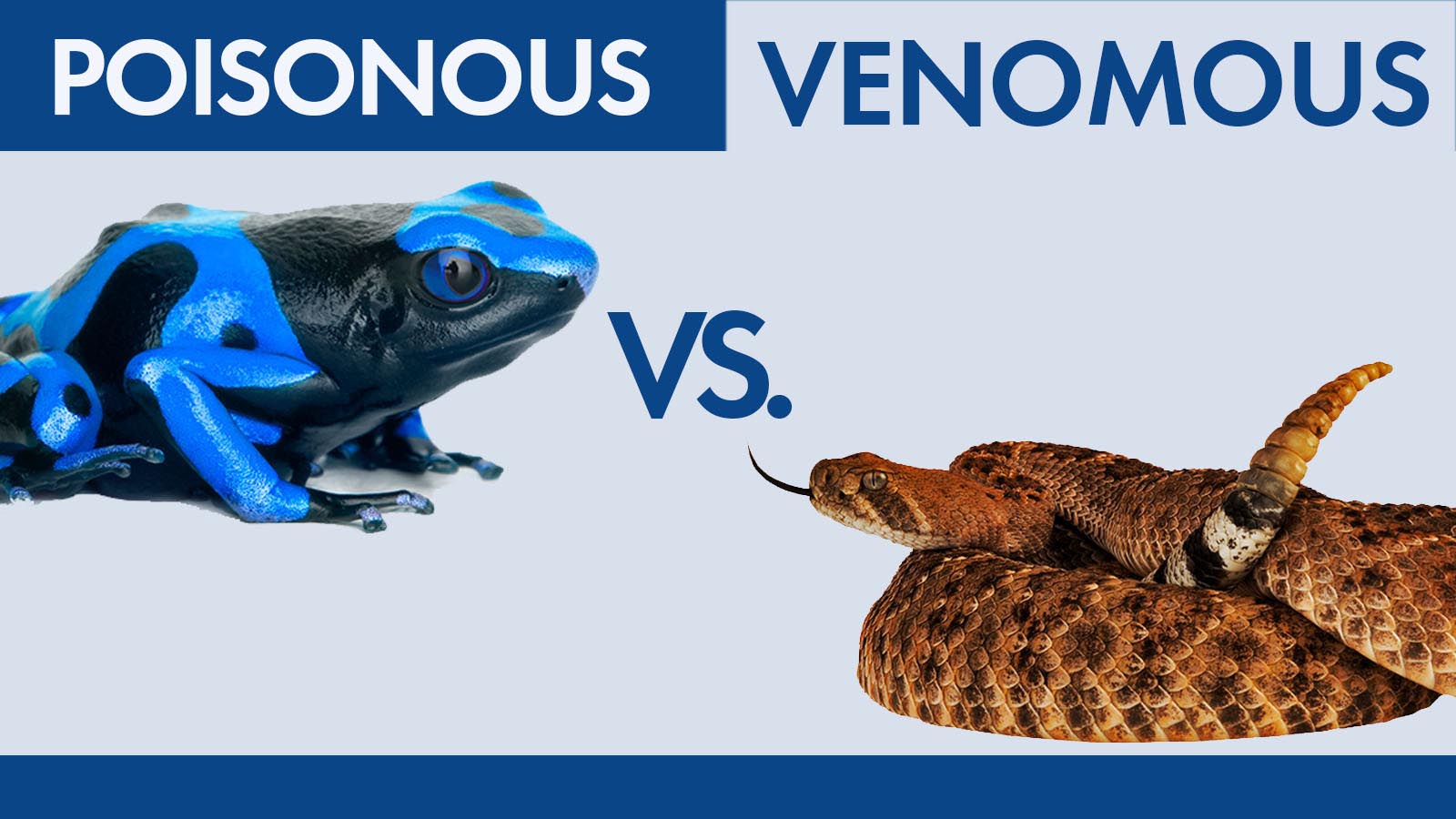Toxic: When ingesting toxins – this is probably less common. For example, lick and eat poison dart frogs. toxins are toxins that enter the body by inhaling, swallowing, or absorbing through the skin. Poison: That's when the toxin is injected into you. 18th. 2018 г. What is the difference between a venomous snake and a venomous snake? • Venomous snakes are harmful to their prey by injecting poison, but toxic snakes can be harmful to consumers when ingested or absorbed. Toxins are harmful toxins only when they enter the bloodstream and are produced by different species of animals. Toxins are harmful toxins when ingested (and, more generally, they enter the system). This is also a general term for harmful substances. Animal poisons that are delivered subcutaneously (such as by being stung or bitten) are also called poisons. In normal use, poisonous organisms are harmful to consume, while poisonous organisms use poison to kill prey or protect themselves during their lifetime. A single organism is toxic and can be toxic, but it is rare. There are toxic and toxic animals. One example is the Tiger Keelback Snake mentioned earlier. The other is the blue-ringed octopus. These little monsters are poisonous, but toxic when eaten.
The terms "poison" and "toxic" are often used interchangeably to refer to the toxic substances produced by animals and their danger to humans. And other creatures have different meanings in biology. Basically, poisons are delivered passively, whereas poisons are delivered actively.
What is the difference between a venomous snake and a venomous snake?
Toxic: You must eat an animal (or plant) Affected by a toxin (poison) In short, the correct term is "venomous snake" instead of "venomous snake". Toxins are substances that are harmful to the body. When considering poison and poison, it is a really important delivery method.
What is the difference between poison and poison and toxin?
Poison – If you chew, you will die. Poison-it bites you and you die. Toxins – Antigens produced by the body through biological processes.
What is a toxic organism?
A toxic organism. Toxins do not deliver toxins directly. Rather, toxins are passively induced. Toxic organisms, or most of them, can contain toxic substances, and poisons are often produced by the animal's special diet.
Are there any poisonous and toxic animals?
Not so many compared to toxic or toxic animals, but quite a few toxic and toxic animals. One example is the keelback snake, which stores toxic toxins in its nuclear glands as a result of the toxic toads eaten by snakes.
What are the more dangerous poisons and poisons?
Poisons are transmitted by ingestion, inhalation, or contact. Venom, on the other hand, is much more specific. It is just injected. .. For example, tetrodotoxin (10,000 times more toxic than cyanide!) Is found in both toxic puffer fish and toxic blue-ringed octopus.
What is the difference between poison and poison?
You must ingest or lick to do harm. Poison ivy is an example of a poisonous plant. Touching poison ivy can cause an itchy and sometimes painful rash. Venom is a special type of poison that has evolved for a specific purpose. It is actively injected through a bite or puncture wound. 2017
Do you prefer poison or poison?
Toxic or poisonous depends on the delivery method. It all depends on the delivery method. Poisons need to be injected to be effective, but poisons can come in contact with, inhale, eat, or touch the skin.
Are there both poison and poison?
Poisons: Poisons can be inhaled, ingested, or penetrated directly into the skin. .. The same animal is toxic and can be toxic. An example of this is the pelagic sea snake-a snake associated with a cobra. It has toxic meat, and its bite can also be poisonous.

Below you will find two helpful answers on a similar topic. 👇
What are the different types of jaguars?What body part do mosquitoes eat?
